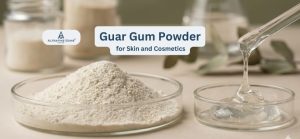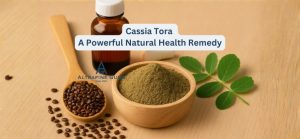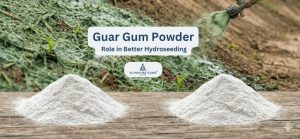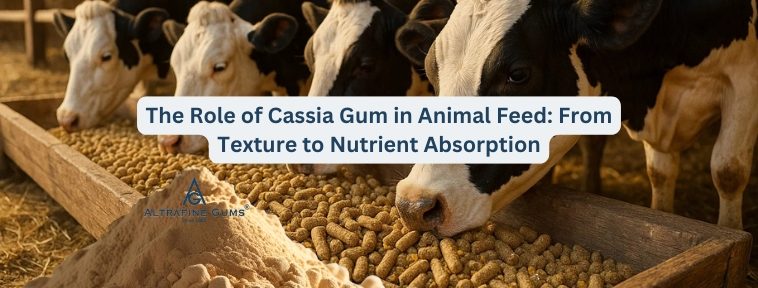
The Role of Cassia Gum in Animal Feed: From Texture to Nutrient Absorption
Table of Contents
Introduction to Cassia Gum as a Gelling Agent in Animal Feed
Cassia Gum, derived from the seeds of the Cassia Tora plant, is gaining popularity as a natural gelling agent in animal feed formulations. Its natural properties – particularly its high-water retention capacity and gelling ability – make it a preferred ingredient in feed for livestock and pets. Cassia Tora has a long history of use in various industries due to its non-toxic nature and ability to improve the consistency and texture of products. In the context of animal feed, Cassia Gum Powder is particularly useful for improving the stability and texture of feed pellets and other solid feed forms.
The ability of Cassia Gum to form stable gels at low concentrations allows for more efficient production and reduces the need for other, more expensive stabilizers. It helps in providing better texture, making the feed more palatable and easier for animals to consume. Additionally, Cassia Tora Extract can support better digestibility, enhancing the overall feed quality.
1. Determining the Right Dosage of Cassia Gum for Different Animal Feeds
What is the Recommended Dosage of Cassia Gum for Animal Feed?
The right dosage of Cassia Gum varies depending on the type of animal feed and the desired gelling effect. Generally, Cassia Gum Powder is used in concentrations ranging from 0.5% to 2% of the total feed mixture. For instance, in livestock feed, where larger quantities are often consumed, a higher concentration of Cassia Gum may be beneficial to maintain pellet integrity during storage and handling.
For poultry feed, which tends to be finer, the recommended dosage of Cassia Gum Powder may be lower. Typically, 0.5% to 1% is used to ensure the right balance of texture without affecting the palatability.
How Should the Dosage Be Adjusted Based on Animal Type?
The dosage of Cassia Gum should be adjusted depending on the species being fed. For livestock, such as cattle, swine or sheep, higher levels of Cassia Gum (around 1.5% to 2%) may be necessary, as these animals consume larger quantities of feed and the gum needs to bind moisture effectively. For poultry, on the other hand, a lower dosage is often sufficient, as poultry requires a smoother, more finely textured feed, which can be achieved with less Cassia Gum Powder.
It is important to test and monitor feed formulations regularly to ensure that the dosage of Cassia Gum is optimal for the specific type of animal being fed. This will help avoid issues with feed consistency and ensure that the desired properties are achieved.
2. Incorporating Cassia Gum in Animal Feed Production
How Should Cassia Gum Be Mixed into Animal Feed?
Cassia Gum should be incorporated into animal feed using a specific process to ensure that it functions effectively as a gelling agent. The process typically involves several key steps to ensure uniform distribution:
- Pre-Mixing: The Cassia Tora Splits should be pre-mixed with other dry ingredients. This ensures even distribution of the gelling agent before any liquid is added.
- Hydration: Once the Cassia Gum Powder is properly distributed in the dry mix, water or another suitable liquid is added. This helps activate the gelling agent and allows it to absorb water, forming a gel-like substance.
- Heating (Optional): In some cases, slight heating may be required to fully activate the Cassia Tora Extract and ensure the proper gelling properties are achieved. However, excessive heat should be avoided to prevent the Cassia Gum from losing its effectiveness.
- Final Blending: After hydration, the feed mixture should be blended thoroughly to ensure that the Cassia Gum is evenly distributed throughout the feed.
3. Cassia Gum’s Role in Enhancing Feed Texture
How Does Cassia Gum Help in Forming Stable Feed Products?
One of the major roles of Cassia Gum in animal feed production is improving feed stability. The gelling properties of Cassia Tora Powder allow it to bind water effectively, forming stable pellets and crumbles that are resistant to breaking down during handling or storage. This is particularly important for pelleted animal feed, where feed integrity must be maintained throughout the entire production and distribution process.
As the Cassia Gum helps form these stable structures, it also improves the overall shelf life of the feed. The gel network prevents ingredients from separating or shifting, ensuring a consistent product.
How Does Cassia Gum Impact Feed Texture and Palatability?
In addition to providing structural stability, Cassia Gum plays a key role in improving the texture of the feed. By binding moisture, it helps create a smooth, consistent texture that is more palatable to animals. This increased palatability encourages better feed intake and digestion, leading to improved feed conversion ratios.
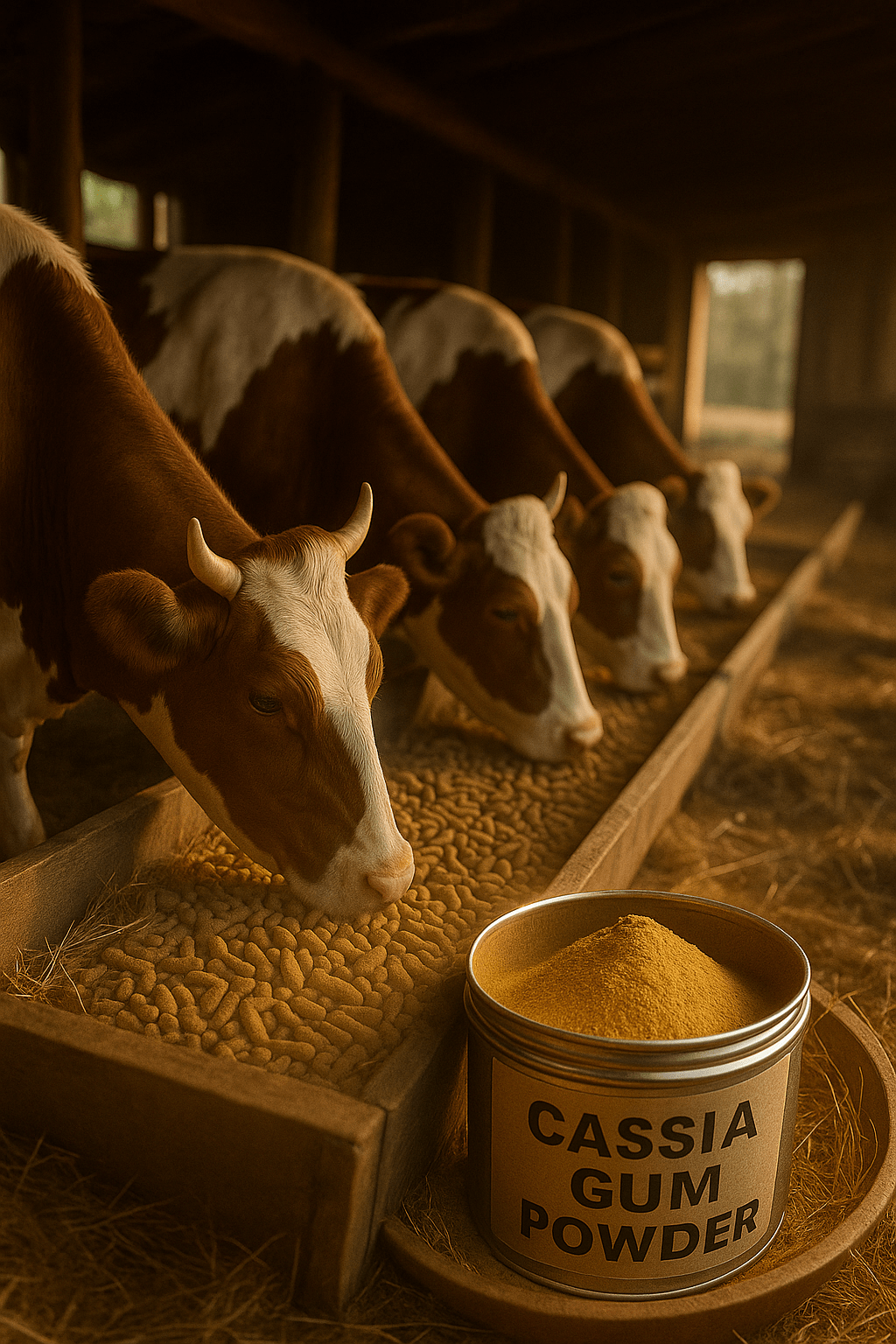
For Cassia Tora in Pet Food, texture is especially important, as pets are more likely to reject feed that is dry, coarse or difficult to chew. The gelling action of cassia gum can enhance the overall eating experience, making the feed more appealing.
4. Improving Nutrient Absorption and Digestive Health with Cassia Gum
How Does Cassia Gum Improve Nutrient Absorption in Animals?
Cassia Gum can enhance nutrient absorption in animals by improving the digestive process. When used in animal feed, Cassia Gum Powder helps form a gel matrix in the gut that regulates the passage of nutrients. This allows for more efficient nutrient absorption, improving overall health and promoting growth.
For animals that experience digestive issues, such as bloating or constipation, the gel-forming properties of Cassia Tora help maintain a consistent and stable gut environment. This can reduce gastrointestinal problems, supporting better overall health and more efficient nutrient utilization.
What Are the Benefits of Cassia Gum for Digestive Health?
Cassia Gum is also known for its potential to aid in reducing digestive issues. By improving feed texture and stabilizing the feed in the animal’s digestive tract, cassia gum helps prevent issues such as indigestion, bloating and diarrhea. This leads to better feed conversion ratios (FCR), as animals can more effectively digest the nutrients in their feed.
5. Quality Control and Monitoring Cassia Gum Usage in Animal Feed
How Can Feed Manufacturers Ensure Consistent Quality in Animal Feed Formulations?
Maintaining consistent quality in animal feed is crucial to ensuring that cassia gum performs optimally. Feed manufacturers should regularly test their feed for consistency, moisture content and texture to ensure that Cassia Gum Powder is providing the desired gelling effect.
Cassia gum can be sensitive to environmental factors such as humidity and temperature, so it is important to maintain a controlled environment during feed production. Monitoring these variables and adjusting the Cassia Gum dosage accordingly can help maintain consistent feed quality.
What Are the Best Practices for Monitoring and Adjusting Cassia Gum Usage?
To ensure that the Cassia Gum is working effectively, feed manufacturers should implement regular quality control checks. These checks should focus on the feed’s texture, moisture retention and pellet integrity. If any inconsistencies are noted, adjustments to the Cassia Gum dosage or processing methods may be required.
Conclusion
Cassia Gum is a highly effective and natural gelling agent in animal feed production, offering a range of benefits, including improved feed texture, stability and digestibility. By following the best practices outlined – such as determining the right dosage, incorporating the gum correctly into the feed formulation and monitoring the final product for consistency – feed manufacturers can fully leverage the Cassia Gum Benefits.
As Cassia Gum Powder continues to play a critical role in enhancing the quality of animal feed, its use will likely grow in importance for livestock, poultry and even pet food formulations. Its ability to improve nutrient absorption, digestive health and feed texture makes it an indispensable ingredient in animal nutrition.
FAQs About Cassia Gum Powder
What is Cassia Gum and why is it used in animal feed?
Cassia Gum is a natural gelling agent derived from the Cassia Tora plant, used to improve feed texture, stability and digestibility.
How does Cassia Gum improve feed texture?
Cassia Gum binds moisture, improving feed texture, making it smoother, more palatable and enhancing overall feed intake.
Can Cassia Gum improve nutrient absorption in animals?
Yes, Cassia Gum helps regulate nutrient passage, improving absorption and digestive health, reducing gastrointestinal issues like bloating.
How can manufacturers ensure consistent quality when using Cassia Gum?
Regular quality control checks for texture, moisture content and pellet integrity, along with environmental monitoring, help maintain consistent feed quality.

CEO, Altrafine Gums
With over Four decades of expertise in the natural gums and hydrocolloids industry, Ajit Patel leads Altrafine Gums, a globally recognized manufacturer and exporter of Guar Gum Powder, Cassia Tora Powder (Cassia Gum Powder) and other Hydrocolloids. Under his visionary leadership, the company has built a strong reputation for quality, innovation, and reliability across the food, feed, pet feed, pharmaceutical, mining, oil drilling and cosmetic sectors.
Altrafine Gums has been serving global industries for decades with a focus on sustainable sourcing, research-driven production, and stringent quality control. Its wide product portfolio includes Guar Gum Powder, Cassia Tora Powder (Cassia Gum Powder) and other plant-based hydrocolloids that serve as key functional ingredients in diverse applications.
Ajit Patel’s commitment to excellence ensures that every product from Altrafine meets international standards of performance and purity. He is passionate about advancing the global reach of Indian hydrocolloids, fostering customer trust, and promoting eco-friendly, science-backed solutions that enhance product formulation and performance worldwide.






